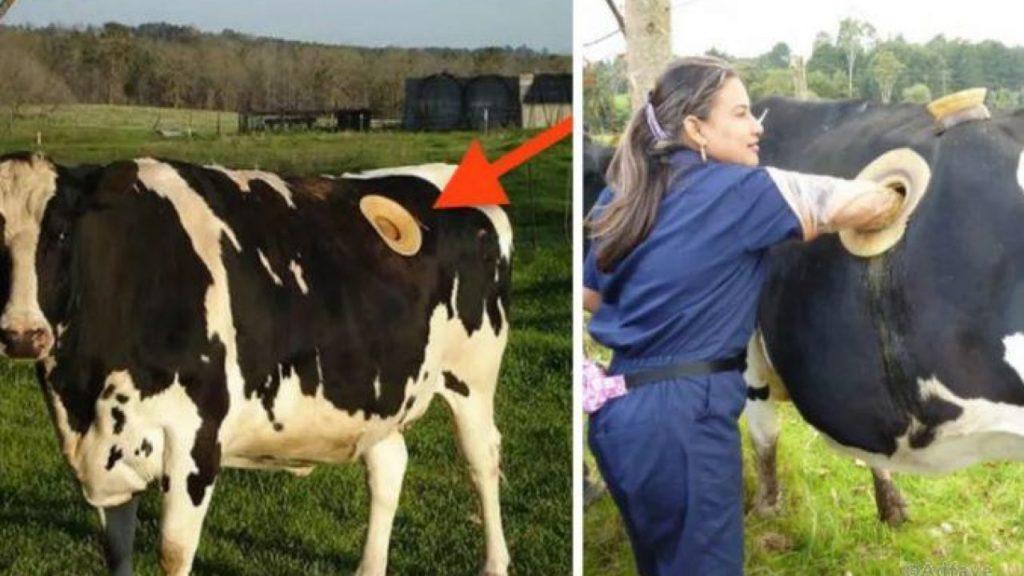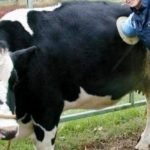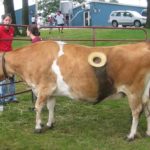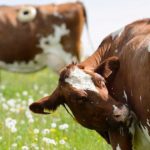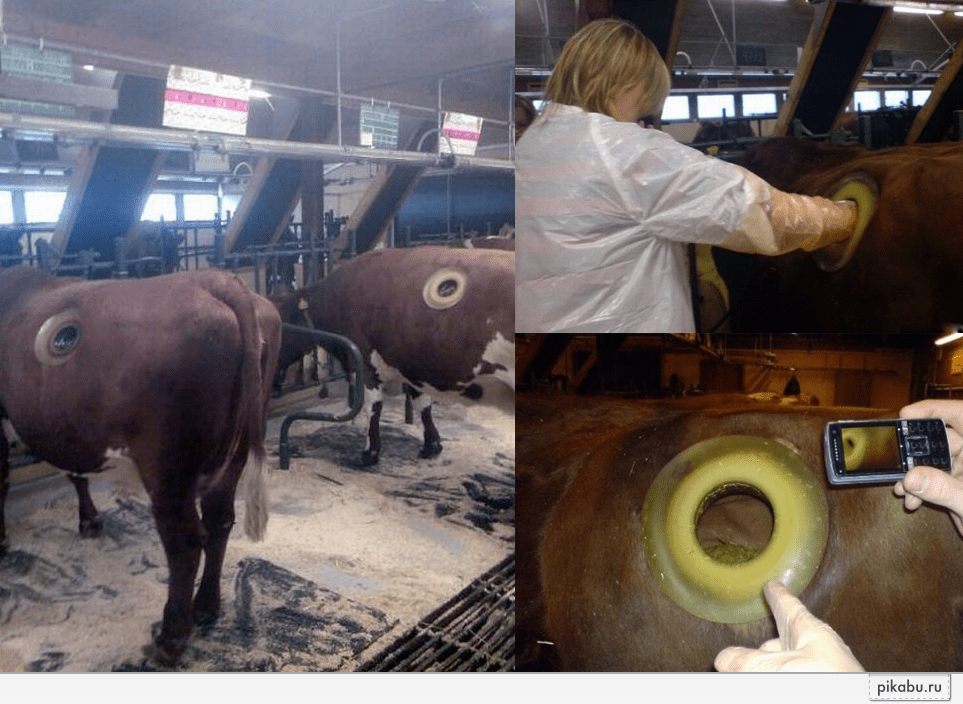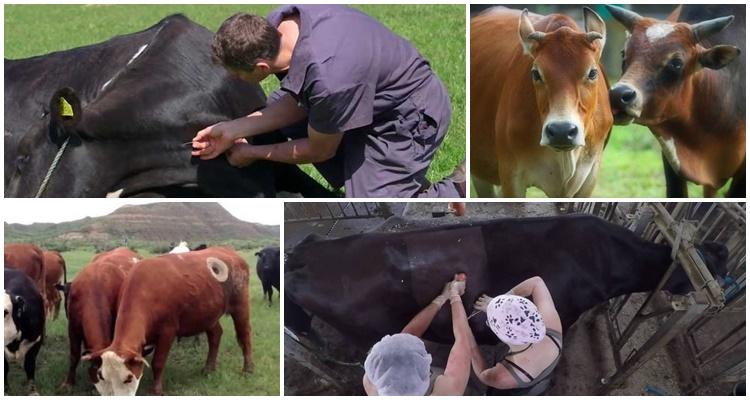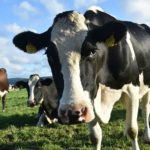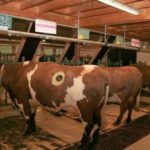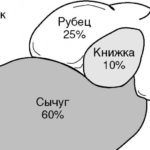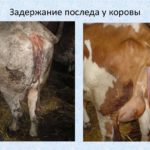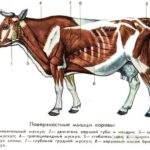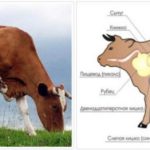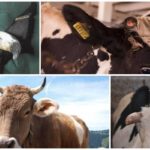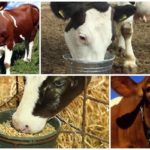A cow walking proudly with a hole in its side is an unusual sight. Animal lovers may find such interference in the cow’s body unacceptable. However, you should not make hasty conclusions and rush to protect the animal. The hole made by the surgeon allows you to adjust the cow’s nutrition, as well as carry out effective treatment.
Why is a hole in the abdominal cavity necessary?
Nature has endowed the cow with a special stomach structure.The organ consists of 4 separate parts, each of which does its own job. Most of the cow's gastrointestinal tract is occupied by the scar. The capacity of this “receiver” of chewed food is 200 liters. Numerous microorganisms are responsible for the initial processing of ingested food. Helpers invisible to the eye are concentrated in the scar area and contribute to the production and synthesis of protein in the pet’s body.
Processed food enters the stomach network. This part of the organ acts as a kind of filter. Small and liquid particles of food are sent to the next chamber of the stomach (book), and large ones in the form of belching are returned to the animal’s oral cavity. The cow chews the grass again, and everything repeats all over again.
A sharp transition to a summer diet and overeating of succulent grass by animals lead to disruption of the pet’s stomach. Stopping the mechanism of regurgitation of food is fraught with serious consequences. Remains of undigested food cause fermentation and bloating in the cow's gastrointestinal tract. Only an experienced farmer or veterinarian can save a cow from suffering. Without timely assistance from a specialist, the cow may die. In severe cases, the cow undergoes a painful procedure - puncture of the scar.
To simplify the task, implanting a special fistula into the cow’s body will help. The device consists of a hole made in the side of the cow. With the help of a fistula, the veterinarian gains direct access to the cow’s gastrointestinal tract. Using a cannula, a specialist can remove accumulated gases from the cow’s intestines, remove a foreign body from the esophagus, and directly administer a medicinal drug.During the procedure, the cow does not experience pain, so the owner does not have to worry about the condition of the pet.
Getting online access
If necessary, the veterinarian will use an opening in the cow's side to surgically repair the cow's vital organs. Surgery is often performed on animals with traumatic reticulitis. A dangerous disease occurs due to the entry of a foreign sharp body into the mesh of the cow’s stomach. A foreign object injures the walls of the stomach, heart, respiratory organs or the internal cavity of the peritoneum.
Due to damage to internal organs, the animal develops diseases such as pleurisy, peritonitis or traumatic pericarditis.
Under these conditions, the only chance to save the pet is surgery by opening the scar. For the convenience of surgical intervention, a cow turner is used. Having secured the animal, the veterinarian penetrates the cow’s gastrointestinal tract, removes the foreign object and, after cutting the rumen wall, begins rescuing the damaged organ.
Relocation of microflora
When treating acidosis (accumulation of lactic acid in the stomach) and other disorders of the digestive organs, the veterinarian resorts to transfaunation. The procedure involves the transfer of a certain number of microorganisms from the rumen of a healthy cow into the gastrointestinal tract of a sick animal.
You can safely take up to 2 liters of liquid stomach contents from a cow kept on a farm. A hole made in the side of the animal allows valuable microorganisms to be placed into the digestive tract of an ill cow. The procedure is carried out for 40-60 minutes. Treatment helps to improve the functioning of the cow’s gastrointestinal tract and restore the animal’s lost productivity.
Laboratory research and experiments
The effectiveness of diagnostic studies directly depends on the speed of action taken. Using a fistula placed in the cow's stomach, a specialist can instantly take the necessary samples. The valve allows the specialist to accurately determine how a certain type of food or medicinal drug affects the cow’s digestion.
Just a few years ago, similar studies were carried out using the probing method. The traditional method of diagnosis brought physical suffering to animals. Thanks to modern research methods, the pet tolerates diagnostic procedures completely painlessly.
Stages of the operation
The valve is installed only on adult, well-fed, calved cows. The optimal age for surgery is 2.5-3 years. At a younger age, pets continue to grow, so the installed fistula can become significantly displaced.
Cow preparation
Experienced people begin preparatory activities 2 weeks before surgery. Regardless of vaccination status, cows are tested for susceptibility to tuberculosis, brucellosis, anthrax and other infectious diseases. Vaccination is stopped completely 30 days before valve installation. Only 60 days after the operation can you return to the vaccination schedule familiar to the owners. 12 hours before the start of the procedure, stop feeding the pet.
Some experts prohibit feeding cows before surgery, but the vast majority of veterinarians consider this measure unnecessary.
Scar surgery
As a rule, the operation is performed in autumn or spring. During this period, the weather remains comfortable and there are no annoying insects. The fistula is installed under local anesthesia. Using chalk, the veterinarian marks the place on the animal's body for implanting the cannula.
The device is made of special plastic. Thanks to its resistance to oxidation, the fistula is not destroyed by stomach acid and microorganisms. The valve should be located in the hungry fossa, on the side of the spine. The operation is carried out according to a single algorithm.
- The animal is given a muscle injection of any relaxant. This will help relieve some nervous tension and calm the cow.
- The cow is securely fixed on a special machine.
- The cow is given an anesthetic and an incision is made at the area marked with chalk.
- The veterinarian carefully separates the muscle fibers and makes an incision in the peritoneum.
- The tissue of the scar wall is carefully pulled to the incision site. Carefully, without touching the muscles, the specialist secures the scar tissue to the cow’s skin.
- Then the veterinarian makes an incision in the stomach and stitches the edges of the tissue to the skin of the cow.
- The cannula is heated, this gives the part elasticity.
- The fistula is inserted into the hole made. The device securely grips the muscles, so there is no need to secure it.
- The hole is hermetically sealed with a special lid.
Benefits of Fistula Placement
Despite their terrifying appearance, fistulas have a number of advantages over traditional methods of influencing the animal’s body:
- Possibility of emergency intervention in a situation dangerous to the cow’s health. You can gain access to the internal organs of the cow at any time.
- Possibility of urgent removal of food from the pet’s stomach. Digestive problems often occur due to poorly digested food. Urgent cleaning of the cow's stomach from low-quality food will help prevent the disease. The easiest way to do the procedure is through an opening valve.
- Convenient procedure for removing accumulated gases from the cow’s gastrointestinal tract.
- Constant control of the bacterial environment populating the stomach of the cow.
- Possibility of competent preparation of a cow's diet. Thanks to the installation of a fistula, it is easy to determine what type of food is suitable for your pet. Ultimately, technology helps to increase milk yield and product quality.
- Convenient administration of medications directly into the pet’s gastrointestinal tract. Thus, the chances of saving the cow in case of acute poisoning increase.
Aftercare
During the first week after surgery, the tumor in the injured area of the body does not fall off, so the animal is given antibiotics. The course of taking the drug is designed for 5 days. All this time, the diseased area is treated with any disinfectant solution.
The cow is kept in an isolated, clean room. It is necessary to protect the pet from contact with relatives and other animals. The recovery process should take place under the supervision of a specialist. The cow's diet does not change. The milking of the animal is carried out according to the usual schedule for everyone.

